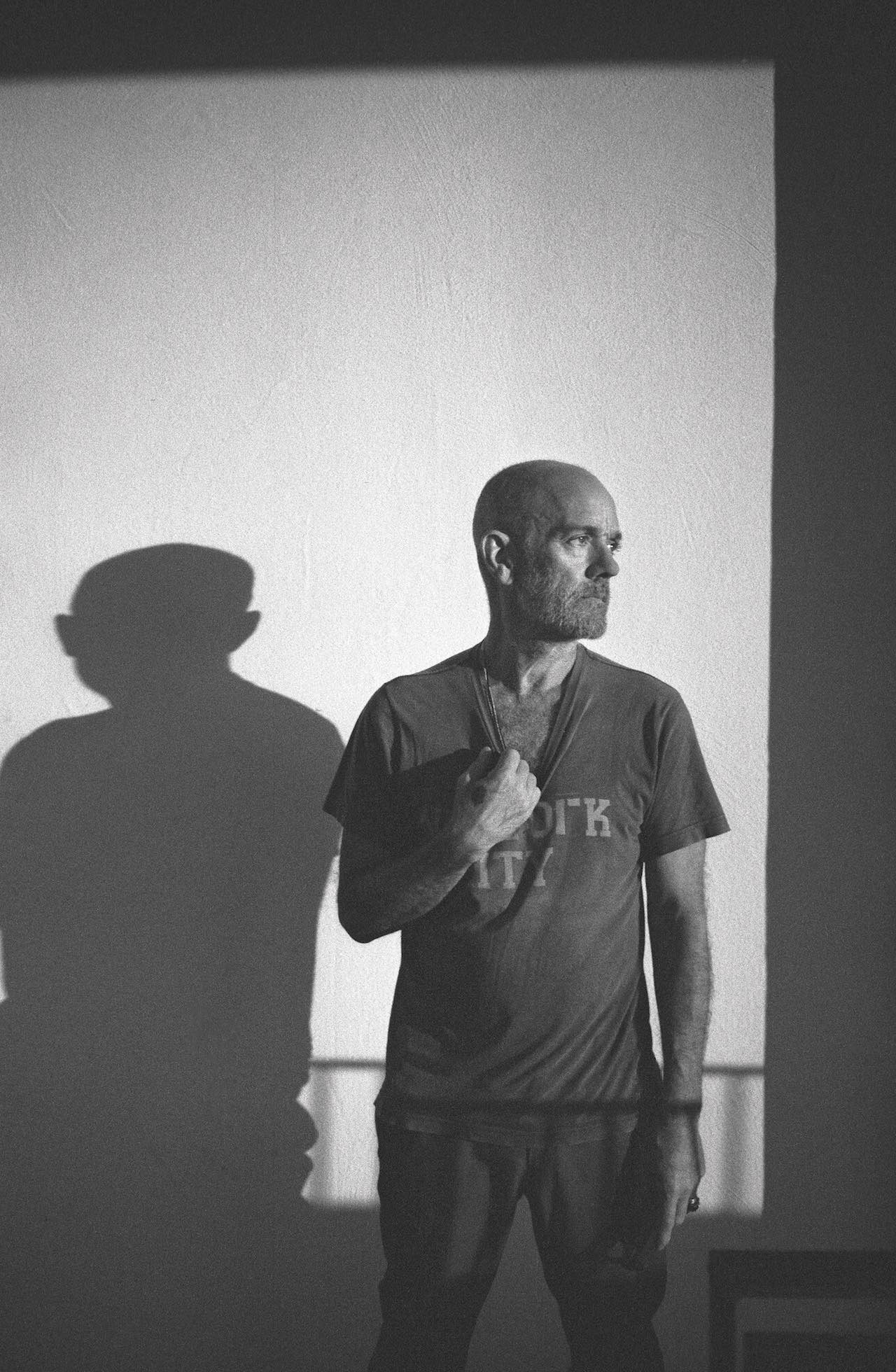Any Answers: Michael Stipe
© Michael Grieve.
Source:
Michael Stipe began photographing as a teenager, and never really stopped, even after REM achieved worldwide fame in the late 1980s. Two years ago he published Michael Stipe: Volume 1, presenting a small fraction of the huge collection of diaristic images he’s amassed.
Stipe recently followed up with a critically acclaimed second book, Our Interference Times: A Visual Record, published by Damiani. Below, he reflects on his past, present and future.
I recall being photographed when I was two years old, when I had scarlet fever. The photographer kept asking me to smile, but I was so hot with fever, and the sweater I was wearing was so uncomfortable. And I was really hallucinating wildly. His head kept getting bigger and smaller while I tried to feebly smile.
I have been taking photographs since I was a teenager. Mostly, I took portraits of friends. And self-portraits. I have always been primarily visual. It felt completely natural then, as it does now, to gravitate towards photographing my life.
I studied art at the University of Georgia. I learned to trust my instinct. Write drunk, edit sober. Don’t worry too much about the archive: if it’s worth saving, someone will save it.
With the success of REM, I was mentally and emotionally overwhelmed. I like being overwhelmed; it’s a state that I thrive within.
I personally produced or oversaw every aspect of visuals and art direction for the entire 31 years that we were an active band. I still oversee the archive and new releases.
Music and my visual work most definitely overlap. For me, music – at least good or great music – is completely visual. Both are very powerful mediums that can combine to create incredible tension, release, catharsis, and beauty.
There is one photograph that has had a profound effect on me. It’s by Peter Hujar of a man with an erect penis, called Seated Nude, Bruce de Sainte Croix from 1976. I saw it the first time I came to NYC in a small group show, and I had never seen nudity and sexuality shown with such grace and objectivity.
I think that truth rather than intimacy is the mark of a successful photograph. Intimacy is important, but truth is vital.
I once said that a portrait does not have to be a face. Meaning, details of a person’s body, life, or environments can sometimes be as strong, and tell as much of a story, as a face shot. I try to encourage new ways of showing humanity – our vast contradictions, our beauty and chaos.
In Michael Stipe: Volume 1, 35 photographs from 37,000 were selected. It was actually a task I left to my collaborator, artist Jonathan Berger. I helped guide his final choices, but he was looking for a queer narrative that has run through my entire canon of work.
The most significant photograph in the book is a portrait of my sister Lynda and our friend Ané. It’s when I was using a 6×6 film camera, and there’s just a different formalism to that format than my usual work. It makes me step back and examine my eye and how I interpret space and light.
It sucks balls to be an American right now. It’s an embarrassment.
I split my time between two cities. Berlin is a great release, and a breather from the intensity of NYC. It has its own intensity, but the pace is much more human… and in a way, artist scaled. There’s a lot of room there for serious thought and reflection. In NYC, it’s often simply reaction rather than reflection.
Our Interference Times is my new book. It references and hopefully spotlights this intense transitional phase we are in right now, and helps show a different way of seeing through it into what I believe to be a very optimistic future. We just have to endure a lot of shit during the transition and believe strongly in ourselves to make it through. I truly believe that we will make it.
I’m working on the next book of photographs. It will be mostly portraits. I’m cataloguing video work, and preparing that to be shown in conjunction with the photo-based work. Separate to that I am working on a single installation piece about Roy Cohn [the disgraced American lawyer best known for his persecution of alleged communists and gay men during the McCarthy era]. I’m also writing and recording new music. I’m really excited about where this is all going and how it’s shaping up.
Michael Grieve has been a contributing writer and photographer for the British Journal of Photography since 2011. He has an MA in Photographic Studies from the University of Westminster, graduating in 1997, and then began working on assignments as a reportage and portrait photographer for publications. In 2008 he began writing about photography and was the deputy editor of 1000 Words Contemporary Photography Magazine. In 2011 he began teaching and was a senior lecturer in photography at Nottingham Trent University and now teaches documentary photography at Ostkreuzschule fur Fotografie in Berlin. He is the founder/director of Art Foto Mode, a project that organises photography workshops internationally. Currently based in Athens and Berlin.
